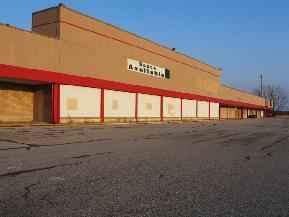 Amazon continues to dominate in the online marketplace.
Amazon continues to dominate in the online marketplace.
SAN FRANCISCO—In each of the major commercial real estate property type sectors, secular trends continue to influence demand and shape performance. Two evolving trends that are impacting the warehouse segment have been e-commerce, which continues to drive the space needs associated with the movement and storage of online retail goods, and a growing marijuana industry, which is increasing demand for both old and new warehouse properties in select markets, according to Kroll Bond Rating Agency Inc.
With the emphasis on logistics and proximity to customers, retailers are now more often utilizing fulfillment centers or revamping existing distribution centers to accommodate e-commerce growth. This supply chain reconfiguration plays into the instant gratification that e-commerce shoppers want: shortening the time between the click on the computer and the knock on the door for the delivered goods, GlobeSt.com learns.
After Colorado voters approved the use and sale of recreational marijuana in November 2012, Denver warehouse rental increases reached double digit growth in 2013, which continued in 2014 and 2015. This compares with the national annual rent growth during this same period of between 3% and 5%. If the rent growth that Denver experienced is any indication of what could happen in California where recreational marijuana has been legalized, the impact to warehouse space fundamentals could be even greater.
Both new warehouse space for e-commerce activity and older class-B and -C space for dispensaries that have retail marijuana distribution should benefit. CMBS warehouse collateral that is located in markets where marijuana has been legalized should receive a positive spillover effect, as increased demand lifts market rents and property prices.
One particular challenge for landlords is that although marijuana may be legal in some states, under federal law, it remains a Schedule I controlled substance, illegal for any use. In addition to conflicting state and federal law, there can be other issues for lenders. Allowing illegal activity on a commercial property is typically a technical violation of a property owner’s loan covenants, which could cause a default under the loan documents.
Also significant in the e-commerce vein is the analysis of holiday online retail traffic, which recorded a bump last year. Sales grew 4% in 2016, well above the 2.6% 10-year average. E-commerce performance eclipsed brick-and-mortar resoundingly and the long-term, i.e. year-round, implications for both retail and industrial real estate are increasingly significant, according to Cushman & Wakefield.
The firm offered an analysis of the holiday season and the general impact of e-commerce on the supply chain and physical store locations in its Bricks vs. Clicks webinar series last month. Cushman & Wakefield’s Ben Conwell, e-commerce fulfillment practice group leader (and former Amazon North American operations real estate director), and Garrick Brown, head of retail research for the Americas, led the discussion.
“We expected a strong holiday shopping season simply because of consumer economics – with lower unemployment rate and wage growth really picking up,” Brown said. “All of that seemed to play out. The big challenge, if you’re in bricks and mortar, is did you feel much love?”
Conwell and Brown touched on a variety of relevant trends and data points including e-commerce in terms of share of total overall retail and general merchandise, apparel, furniture and other sales; the impact of click-and-collect and in-store returns for purchases made online; Amazon’s continued dominance in the online marketplace; and store closures and the impact on mall versus non-mall shopping center vacancies. One forward-facing trend involves the evolving surge of cross-border retail with China, which is predicted to increase 177% during the next three years.
“It is a very hot area we have been talking about with investor clients and real estate clients for some time,” Conwell noted. “The potential for going ‘upstream’ against the traditional flow of online sales is huge. We will see, unquestionably, big increases in the west-to-east sale of goods from US retailers to Chinese consumers. For our industrial clients, that means continued demand for logistics product.”

















 Copyright © 2024 ALM Global, LLC. All Rights Reserved.
Copyright © 2024 ALM Global, LLC. All Rights Reserved.